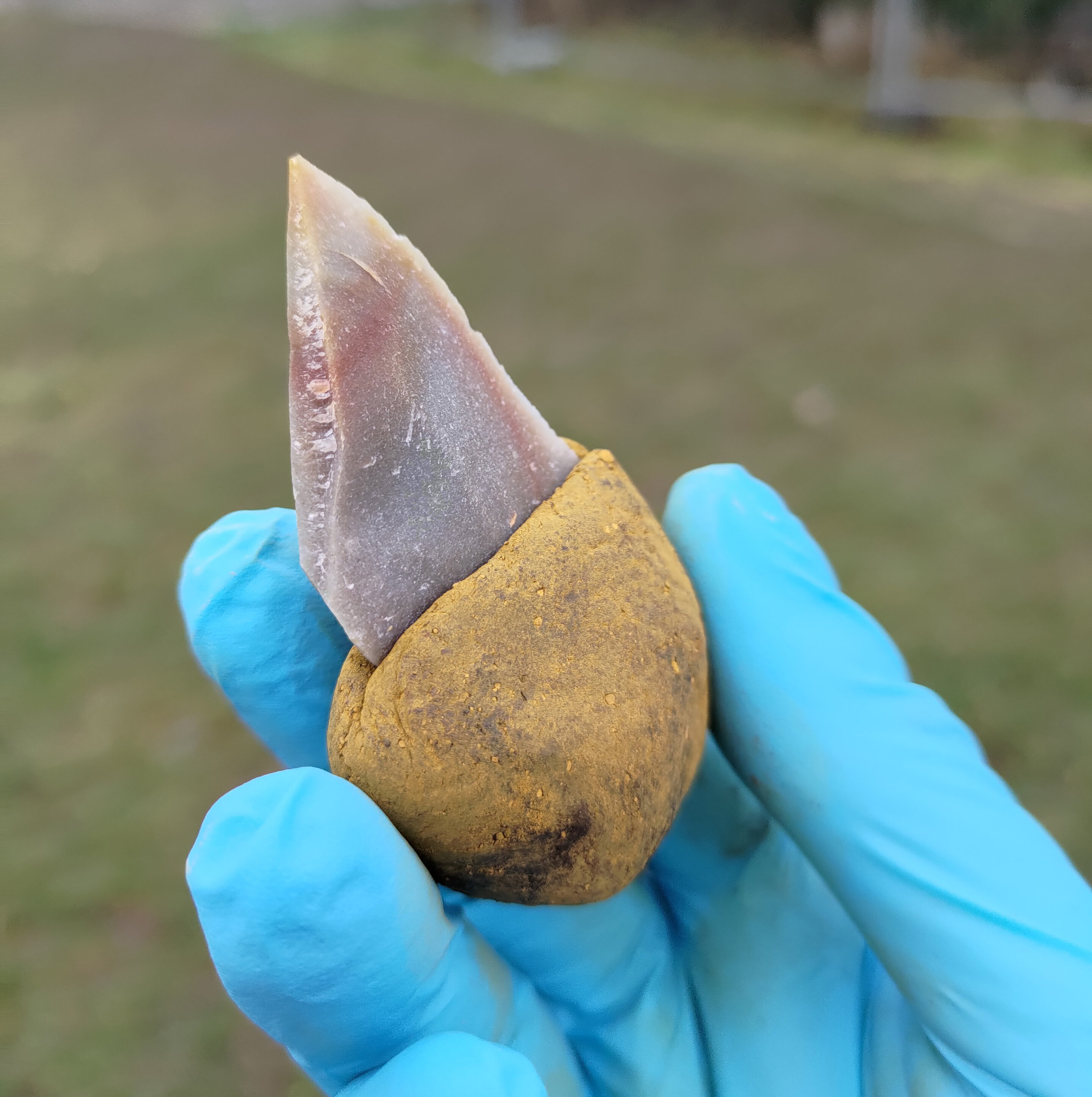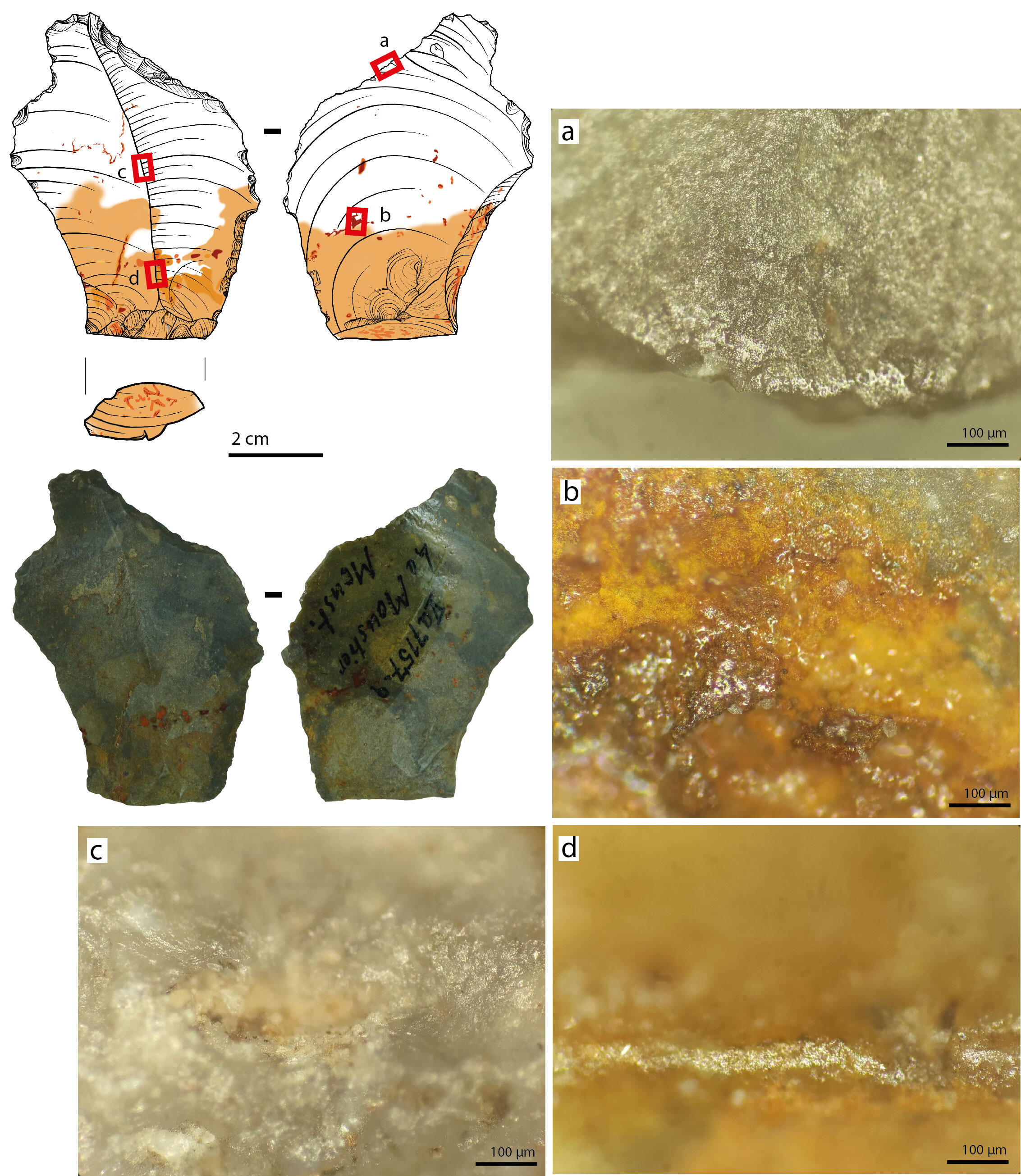Surprising Discovery: Neanderthals' Advanced Technology
Follow us on Google News (click on ☆)
Researchers from New York University, the University of Tübingen, and the National Museums of Berlin re-examined stone tools from the Le Moustier site in France, discovered in the early 20th century. These tools, dating back to the Middle Paleolithic period, show traces of a bitumen and ochre mix, revealing a hitherto unsuspected tool-making technology in Neanderthals.

The stone tool was attached to a handle using liquid bitumen mixed with 55% ochre. It is no longer sticky and can be easily handled.
Credit: Patrick Schmidt
Ochre, a natural pigment, and bitumen, a component of asphalt, were mixed in surprising proportions, with over 50% ochre. This specific composition formed a malleable mass, adhesive enough to hold the tool in place while avoiding sticking to the hands. An ingenious solution that demonstrates real sophistication in tool design.
Microscopic analysis of wear traces on these tools revealed not only the typical polish of sharp edges used to work other materials but also a glossy polish on the parts presumed to be held in hand, resulting from abrasion by ochre. This discovery suggests a thoughtful and elaborate use of these tools, involving a level of complex thinking and planning.
What this study reveals is the Neanderthals' ability to innovate and adapt their technology, similarly to early Homo sapiens in Africa. The need to collect ochre and bitumen from distant places underscores the considerable effort, planning, and targeted approach of the Neanderthals in manufacturing these adhesives.

Micrographs showing wear traces on a tool used by Neanderthals during the Middle Paleolithic period. The locations of the micrographs on the artifact are indicated on the drawing (top left) in red.
a) Polish, or glossiness, on the active edge of the tool's handle.
b) Polish under dye spots in the area covered by the adhesive.
c) Edge between concave surfaces formed by the removal of stone pieces that were removed - rather than worn away naturally.
d) Blunted or worn edge in the graspable area that was covered by an adhesive.
A comparison of (c) and (d) indicates that the worn part is in the area covered by the adhesive-designed handle. The images are shown in microns.
Credit: Drawing by D. Greinert, Staatliche Museen zu Berlin.
The Le Moustier tools document not only the Neanderthals' ability to create complex adhesives but also their capacity to think and act with sophistication equivalent to that of early modern humans. This study significantly enriches our understanding of the cultural evolution and cognitive abilities of early humans.